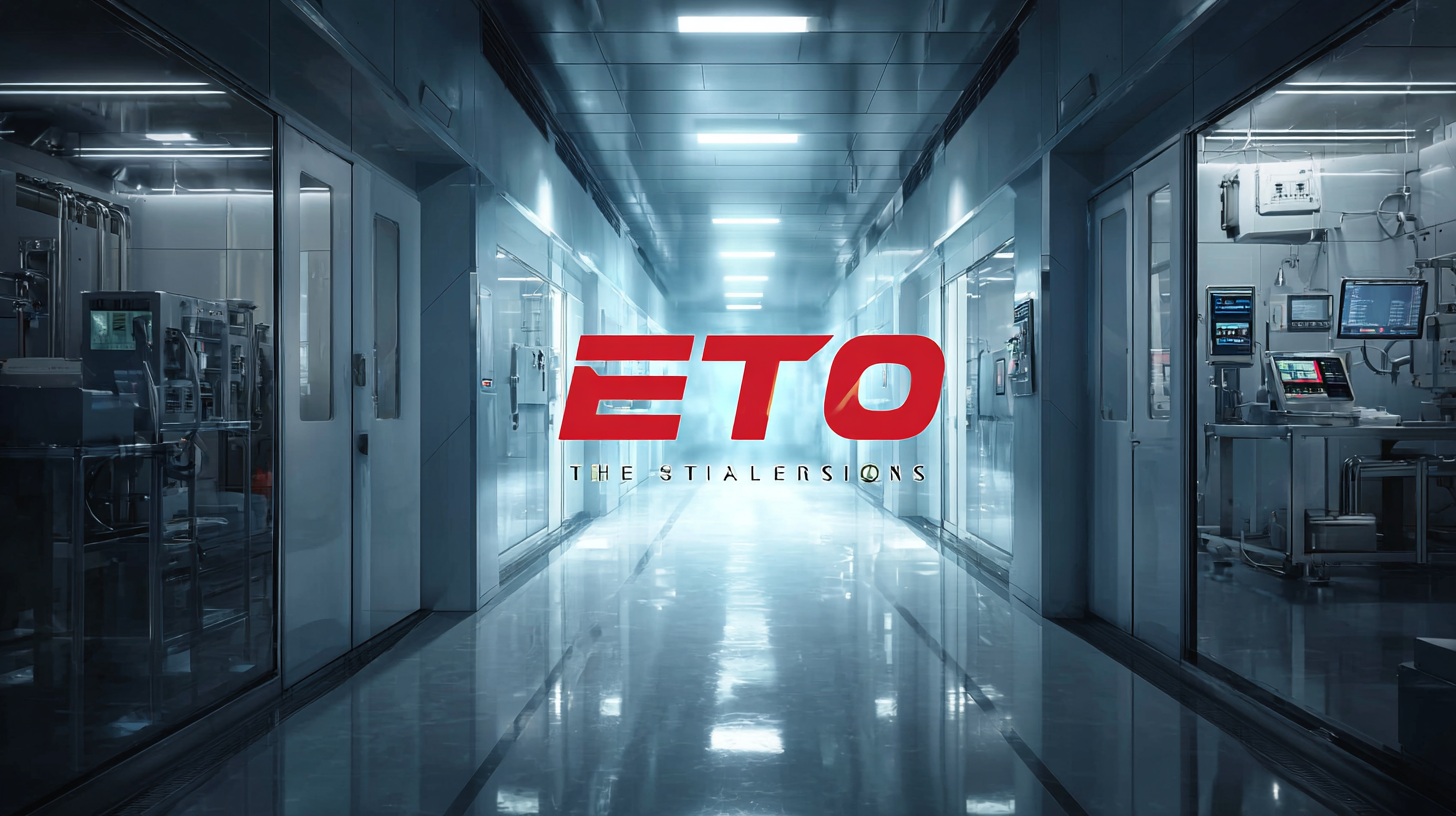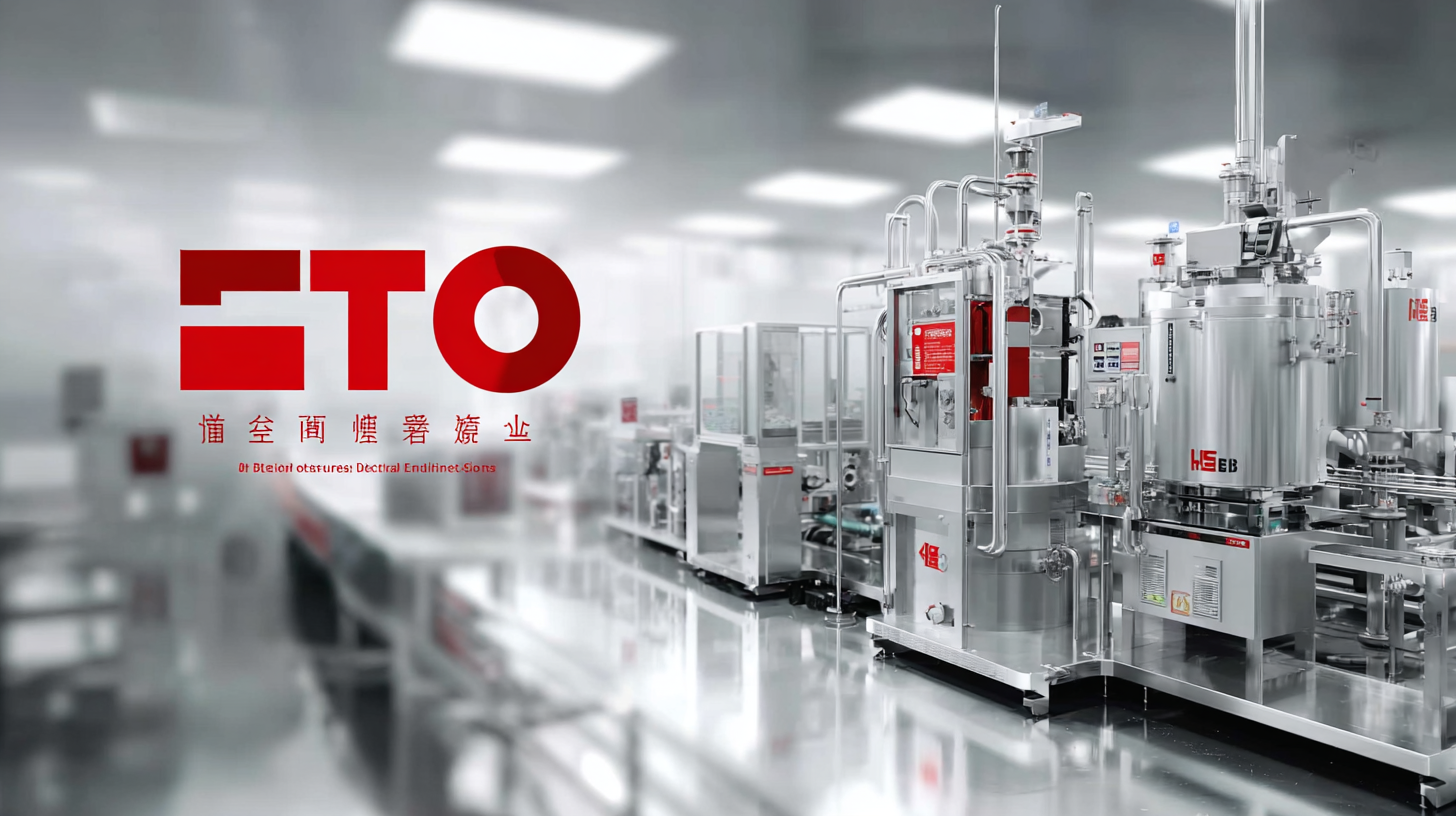- Home
- Products
- Services
- Product concept development
- Engineering
- Design for manufacturability
- Regulatory services
Read more - Material selection and formulation
- Prototyping
- Testing and validation
Read more - Production process development
- Custom tooling
- Manufacturing
- Finishing operations
- Assembly
- Packaging
- Private labeling
- Sterilization
Read more
- Resources
- Careers
- Search
Unleashing the Power of Chinese Manufacturing with Best Eto Sterilization Solutions
In the rapidly evolving landscape of global manufacturing, the need for effective sterilization solutions has never been more critical, especially in the context of Chinese manufacturing, which plays a pivotal role in numerous industries. One of the leading technologies gaining traction is ETO sterilization (ethylene oxide sterilization), known for its efficiency and effectiveness in eradicating a wide range of pathogens without compromising the integrity of sensitive materials. This blog seeks to delve into the technical specifications of the best ETO sterilization solutions available today, providing a comprehensive tutorial to guide manufacturers in implementing these advanced processes.

By harnessing the power of ETO sterilization, Chinese manufacturers can not only enhance product safety and compliance with international standards but also position themselves as leaders in the competitive global market. Join us as we explore the transformative potential of ETO sterilization in optimizing manufacturing practices and ensuring the highest quality products.
The Rise of Advanced Eto Sterilization Technologies in Chinese Manufacturing
In recent years, advanced ethylene oxide (EtO) sterilization technologies have become a cornerstone of innovation within Chinese manufacturing. As industries seek to enhance the safety and quality of medical devices and consumer products, these technologies provide a reliable solution for maintaining sterility without compromising material integrity. The rise of EtO sterilization in China illustrates a commitment to meeting global health standards and sustaining competitive advantage in the manufacturing sector.
To optimize the use of EtO sterilization, manufacturers should consider implementing regular maintenance on sterilization equipment to ensure consistent performance. Regular checks can help identify wear or malfunctions early, reducing downtime and enhancing productivity. Additionally, utilizing advanced monitoring systems can provide real-time data on the sterilization process, allowing for immediate adjustments and ultimately improving efficiency.
Another tip for manufacturers is to invest in employee training focused on the latest sterilization protocols and safety measures. A well-informed workforce is crucial for adhering to compliance standards and minimizing risks associated with EtO sterilization. Encouraging a culture of continuous learning not only enhances operational effectiveness but also guarantees a commitment to product safety and quality.
Market Analysis: Evaluating the Growth of the Global Sterilization Equipment Market for 2025
The global sterilization equipment market is witnessing significant growth as we move closer to 2025, primarily driven by the increasing awareness of hygiene and the need for sanitation across various sectors. The market for hydrogen peroxide sterilization solutions, in particular, is expanding, with a projected market size reaching approximately $11.448 billion by 2025 and an expected climb to $27.347 billion by 2033. This growth translates to a robust compound annual growth rate (CAGR) of 11.5%, highlighting the critical role of effective sterilization in healthcare, food processing, and personal care industries.

When segmented by purity levels, hydrogen peroxide products are categorized into three groups: less than 50% purity, 50%-70% purity, and above 70% purity. Each segment serves distinct applications ranging from pulp and paper to textiles and disinfection products, reflecting diverse consumer needs. Additionally, the enzyme cleaning market is also forecasted for notable growth, showcasing advancements in cleaning technology across both manual and automated processes, further driving the demand for innovative sterilization solutions. As hygiene standards elevate globally, the focus on effective sterilization methodologies will continue to reshape the industry landscape.
Key Innovations in Eto Sterilization: Enhancing Efficiency in Chinese Manufacturing Processes
In recent years, ethylene oxide (EtO) sterilization has emerged as a vital technology for enhancing the efficiency of manufacturing processes in China. With the Chinese manufacturing sector projected to reach $6.4 trillion by 2025, there is a pressing need for advanced sterilization methods that ensure product safety without compromising production speed. According to a report by Grand View Research, the global ethylene oxide sterilization market is expected to grow at a CAGR of 5.1% from 2021 to 2028, underscoring the rising demand for effective sterilization solutions across various industries.
Key innovations in EtO sterilization technology are paving the way for improved operational efficiencies. For example, the integration of automated monitoring systems and data analytics helps manufacturers achieve precise control over the sterilization process, reducing cycle times and minimizing human error. A study from the Journal of Pharmaceutical Sciences highlights that these innovations can lead to a 30% reduction in sterilization times, thereby significantly enhancing throughput without compromising sterility assurance. In addition, advancements in sterilization chamber design enable greater scalability, accommodating larger batches while maintaining stringent sterilization standards, which is particularly beneficial for the rapidly expanding pharmaceutical and medical device sectors in China.

Alternatives to Ethylene Oxide: Exploring Safer Sterilization Solutions for 2025
As the demand for safer and more effective sterilization solutions intensifies, the industry is exploring alternatives to traditional ethylene oxide (EO) sterilization. According to a recent report by the Market Research Future group, the global sterilization market is projected to reach USD 9.5 billion by 2025, with notable shifts towards environmentally friendly options. This surge underscores the urgency for manufacturers to adapt to innovative sterilization technologies, prioritizing both safety and efficacy.
One promising alternative is hydrogen peroxide gas plasma sterilization, which has shown a wide spectrum of microbial effectiveness while minimizing chemical residuals. Additionally, vaporized hydrogen peroxide systems offer a rapid cycle time, making them an efficient choice for hospitals and manufacturing facilities alike. These methods not only ensure high-level disinfection but also align with regulatory demands for safer products.
Tip: When selecting a sterilization solution, consider factors such as material compatibility, cycle duration, and sterilization validation requirements. Always consult with manufacturers to ensure that your chosen method meets both efficiency and environmental standards. Another effective strategy is conducting regular training sessions for staff on best practices in sterilization to maintain compliance and reinforce safety protocols across the board.
Regulatory Challenges and Opportunities: Navigating Compliance in China's Sterilization Landscape
Navigating the complex landscape of sterilization in China requires a keen understanding of regulatory challenges and opportunities. With the growing demand for medical devices and pharmaceuticals, the Chinese sterilization market is projected to reach $1.5 billion by 2025, reflecting an annual growth rate of around 10% (Sources: Market Research Future). However, manufacturers must face stringent compliance requirements imposed by the National Medical Products Administration (NMPA). These regulations not only ensure product safety but also provide a framework for manufacturers to gain market trust.
To successfully navigate these regulatory waters, companies should invest in understanding the pivotal standards such as ISO 13485 and ISO 11135. These certifications not only streamline the compliance process but also enhance a company's reputation in both local and international markets.
**Tips:** Regularly engage with local regulatory agencies to stay updated on any changes in compliance requirements. Additionally, consider collaborating with local experts who understand the nuances of the Chinese sterilization landscape, which can significantly expedite the approval process and mitigate potential setbacks.
Unleashing the Power of Chinese Manufacturing with Best Eto Sterilization Solutions - Regulatory Challenges and Opportunities: Navigating Compliance in China's Sterilization Landscape
| Regulatory Aspect | Current Status | Opportunities | Challenges | Impact on Manufacturing |
|---|---|---|---|---|
| Eto Sterilization Equipment Certification | Mandatory compliance with latest standards | Increased market access | Complex certification processes | Higher quality products |
| Environmental Regulations | Stringent emission standards | Sustainable manufacturing practices | Need for investment in new tech | Reduced environmental impact |
| Product Safety Regulations | Compliance required for market entry | Enhanced consumer trust | High costs of compliance | Increased competitive advantage |
| Import/Export Regulations | Changing tariffs and duties | Access to global markets | Uncertainty in trade relations | Potential for expanded operations |






